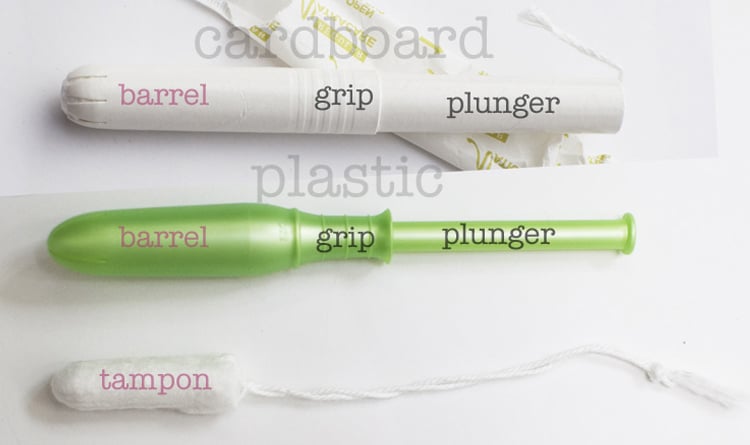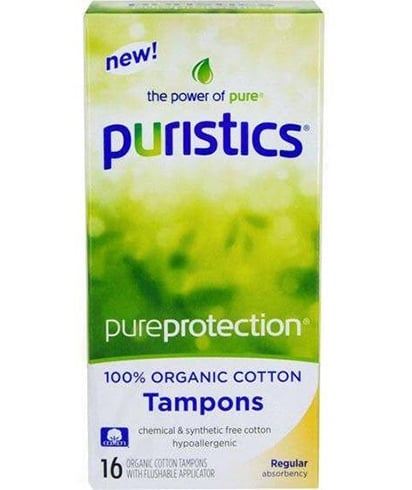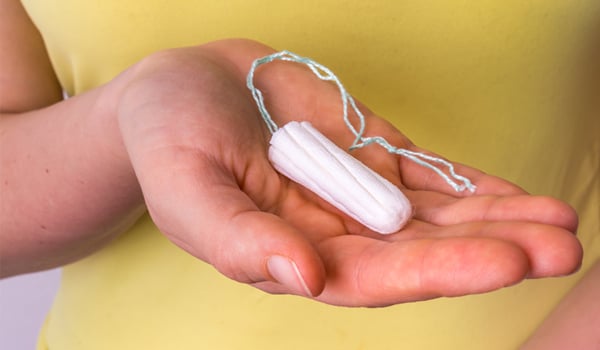
For a woman, each month can be troublesome. Any guesses why? Because the monthly periods limit her movement. Particularly in the case of the ‘outdoorsy’ ones, who can’t sit at home in one corner through those five days. But worry not. There are sanitary pads, in the form of external protection, which absorb the menstrual flow. But what’s a bit more troublesome than the period itself is changing the napkin every now and then.
And then there is tampon – a magical device which gives you internal protection. This is one step ahead in absorption of the menstrual flow.
Let’s find out more about a tampon:
Why To Use a Tampon & What Are They?
Before I brief you on the ‘why’ part of a tampon, let us know more on ‘what’ are tampons.
Tampons reign when it comes to female hygiene. The word ‘tampon’ comes from the French word ‘tapon’ which means ‘plug’ or ‘stopper’. Early evidence suggests that ancient Egyptians, Greeks used natural fibers (such as lint, wool, and softened papyrus, even grass) to plug the menstrual flow.
The modern tampon is made of cotton blended with rayon in “cylinder-like shape”. The basic idea is to insert it in the opening of the vagina. What makes it popular? It absorbs menstrual flow (or blood), before it gets a chance to leave the body. Just like pads, tampons come in different sizes and absorbency. You can buy them at pharmacies and grocery stores (nowadays, even online).
Let us now get a hang of the tampon insertion process.
Here Are Instructions For How To Insert a Tampon
Okay, here we go, step-by-step. How to insert a tampon with “built-in applicator”:
- Clean your hands with soap and water first, so that they stay completely hygienic and free from infection.
- Dry your hands now.
- Now unwrap the tampon.
- By any chance, if the tampon falls off on the floor, then throw it away. Don’t use unhygienic tampon ever.
- Stand (or sit) in a comfortable position (so that inserting a tampon is easier for you).
- Now hold the middle of the tampon (where the “inner tube” of the tampon inserts into the “outer tube”).
- The string of the tampon needs to be visible. Plus, it should point away from your body.
- Use your other hand to open your labia (these are skin folds around the vaginal opening).
- Now place/position the tampon in the vaginal opening.
- Push the tampon gently into the opening of the vagina.
- Stop only when your fingers touch your body and the applicator (meaning the outer tube of the tampon) gets inside the vagina completely.
- Once the outer tube has found its place in the vagina, use your ‘index’ finger to push the inner tube of the tampon in the outer tube. The “inner tube” is where you will see the removal string.
- By doing this, you have pushed the tampon into the vagina.
- When you feel the inner tube is completely in, remove the outer tube by using your thumb and middle finger. See to it that the string is hanging outside your vaginal opening.
- Later on, when you feel the need to remove the tampon, just hold the string and pull it downward (in a gentle way) until the entire tampon is out.
- One thing is a must in the entire process – wash your hands “before” and “after” you insert and remove a tampon.
Know more about the tampon and its parts:
Parts Of a Tampon
There are two parts to a tampon – the ‘tampon’ itself and the ‘string’.
Then there is the “applicator” – which has three parts – the barrel, grip, and plunger.
Whether the tampon is made of plastic or cardboard, every applicator will have the same parts.
In using the applicator, hold on to the grip first. Then, insert the barrel inside your vaginal opening. The next step is to push the plunger into the barrel to further push it out of the applicator. That’s all. Pretty simple, right?
How can you make out a tampon? Let me acquaint you with the “parts” of a tampon!
Can You Identify These Parts On Your Tampon?
A tampon is inserted in a “barrel” (which is made of two materials – plastic and cardboard). There is a “plunger” which pushes the tampon inside the vaginal opening and there is the “grip” which consolidates the push.
Since tampon “is and has” to be a hygienic product for women, you should know a bit more about the product.

Source: theperiodblog.com
[sc:mediad]
- It is important for you to know what makes the female reproductive system.
- Keep-yourself-in-the-know of how to insert a tampon. The step-by-step guide!
- Locate your vaginal opening with the “applicator”, not through your finger.
- Your vaginal opening is not tiny as you think. The tampon will fit in easily.
- Lost the string? Take it out with your hands. No need to panic. A tampon cannot get lost. Never!
- The inserted tampon can never get stuck. It’s a wrong notion.
- No way can a tampon get inserted in the urinary opening. Your “pee area” is so small that a tampon cannot fit in it.
- No, you won’t lose your virginity on inserting a tampon.
- A tampon cannot tear your “hymen” (which is a stretchy tissue which partially covers the vaginal opening)

Source: youtube
Now for some pros and cons!
Pros & Cons of Tampon
One thing that might cross your mind is how ‘safe’ are tampons? Let’s find out.
Pros
- Comfort: Vis-à-vis sanitary pads, if there is one thing which is comfy to wear – it is tampons. They help women stay more active, without going with the fear of the tampon “falling” out of place.
- More Hygienic: With tampons, hygiene is the key. And they do not make you conscious of your flow. Pads, on the other hand are messier and unhealthy if worn for too long.
- Zero visibility: A sanitary pad can show through your pants and can turn out to be very embarrassing. With tampons, there is nothing to worry about.
- Zero smell: As hinted in point 2, tampons are safer to use than pads, as pads can leave a foul smell when worn for a longer period of time.
- Swimming-friendly: With tampons, you can swim during your periods, unlike sanitary pads. Tampons also bring you more comfort in any other sports activity.
- Wear any underwear: Pads limit the scope of wearing any form of underwear during the periods. With tampons, go ahead and wear whatever underclothes you want to wear.
- Compact: Well, sanitary napkins take more space in your purse/handbag as against a tampon.
- Disposal: Hurray! Tampons are much easier to dispose than sanitary pads. This sorts out half the problem, what say?
Cons
- Toxic Shock Syndrome (TSS): Tampon can increase the risk of TSS which happens when harmful bacteria breed in the vagina and get absorbed into the bloodstream. The symptoms include fever, nausea, vomiting, diarrhoea, dizziness, dehydration, muscle pain, etc.
- Difficulty in Usage: There is a section of women who avoid using tampons and go for pads. Any guesses why? They find it ‘next to difficult’. Maybe because they are hesitant to make a “switch over” from pads to tampons, since tampons need to be inserted in the body. Tampon is welcome to some, and scary to some.
- UN-Ecofriendly: Polypropylene, which is the top cover material of a tampon, is sadly not bio-degradable. According to studies, pesticides and chlorine are used to bleach the cotton used in tampons. And then there are ‘dioxins’ which can cause inflammation.
- Won’t know when to change: Yes, it is true. Since tampon is not visible at the time of usage, it’s difficult to tell when to change it.
- Residue factor: At times, tampons can leave a residue in your vagina. Thereby, causing bacterial infections and inflammation.
We’ve heard of ‘Green revolution’. Are there any nature-inclined eco-friendly tampons available? Yes!
Eco Friendly Tampons
Going “green” with your periods is not a piece of fiction, but reality. Here are some eco-friendly tampons available in the market. Go grab them or order online:
1. Natracare Cotton Tampons: World’s first ever certified organic cotton tampons as claimed by the company Natracare. Their tampons are soft and made from biodegradable materials, including a cardboard applicator. No rayon, no chlorine. Tampons available with applicator and without applicator.

Source: ethicalsuperstore.com
2. Maxim Organic Tampons: Brought to you by Maxim Hygiene Products, Maxim Organic Tampons are chlorine-free and 100% certified organic cotton.

Source: iherb.com
3. Puristics Organic Tampons: Parabens-free and phthalates-free, Puristics Tampons are not bleached with chlorine to make them dioxin-free.

Source: shopify.com
Phew! How did you find the article? Absorbing or informative? Or both? Write in your comments and tell us.
